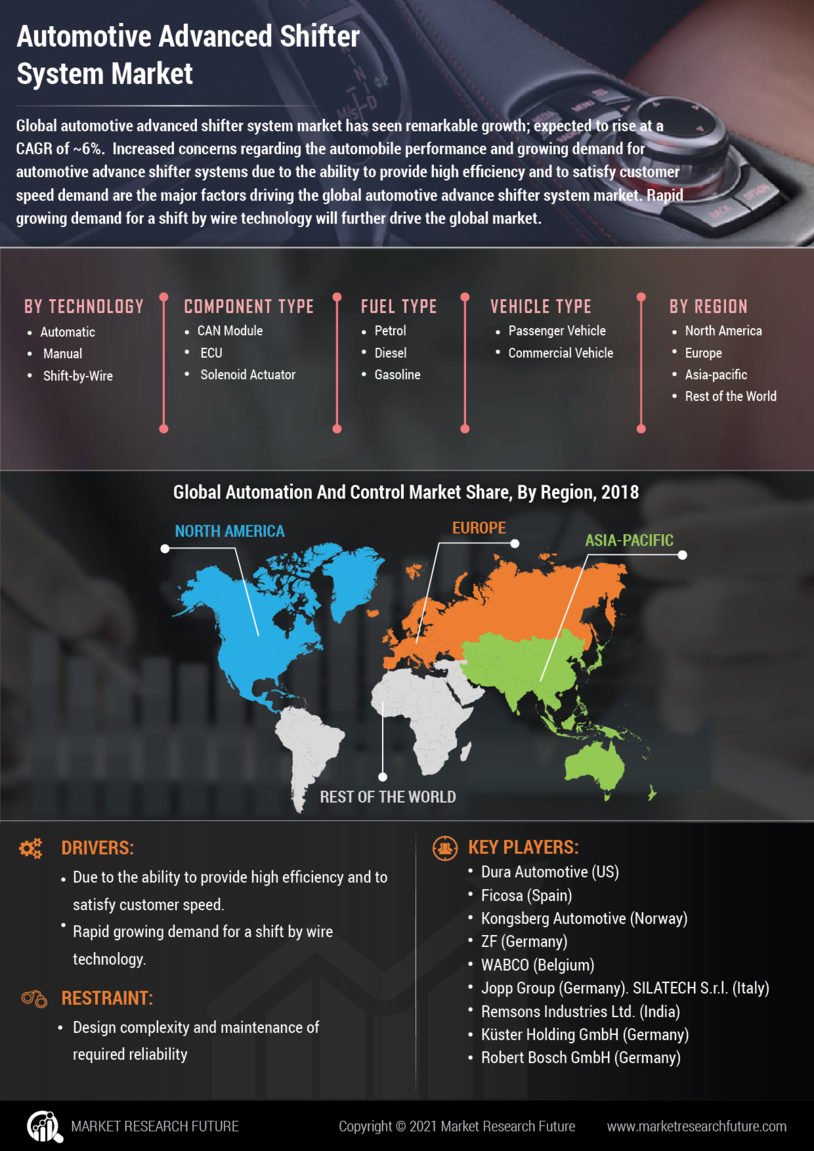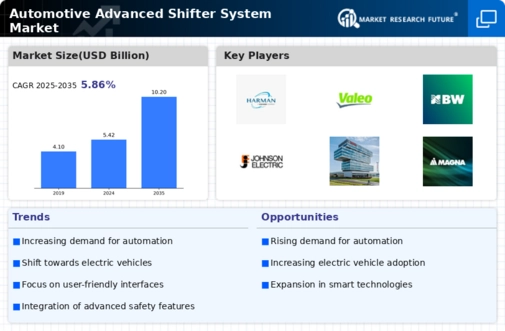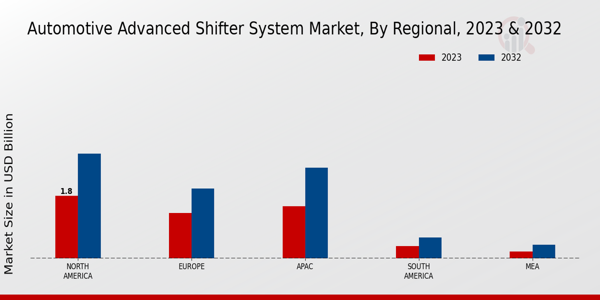Market Growth Projections
The Global Automotive Advanced Shifter System Market Industry is projected to experience substantial growth in the coming years. With a market value of 5.42 USD Billion in 2024, it is anticipated to reach 10.2 USD Billion by 2035. This growth trajectory suggests a compound annual growth rate (CAGR) of 5.92% from 2025 to 2035. The increasing integration of advanced technologies in vehicles, coupled with rising consumer expectations for performance and safety, is likely to drive this expansion. As automakers continue to innovate and adapt to market demands, the advanced shifter system segment is poised for significant advancements.
Increased Focus on Safety Features
The Global Automotive Advanced Shifter System Market Industry is also driven by an increased focus on safety features within vehicles. Advanced shifter systems are being designed with integrated safety mechanisms that prevent unintended gear shifts, thereby enhancing overall vehicle safety. Features such as automatic park engagement and shift lock systems are becoming standard in modern vehicles. This trend aligns with consumer expectations for safer driving experiences, contributing to the market's growth. As manufacturers prioritize safety in their designs, the demand for sophisticated shifter systems is expected to rise, further solidifying the industry's trajectory.
Rising Demand for Electric Vehicles
The Global Automotive Advanced Shifter System Market Industry is significantly influenced by the rising demand for electric vehicles (EVs). As more consumers opt for EVs, manufacturers are compelled to develop advanced shifter systems that cater to the unique requirements of electric drivetrains. These systems often feature simplified gear arrangements and enhanced user interfaces, which align with the overall trend towards sustainability and efficiency. The market is projected to grow to 10.2 USD Billion by 2035, indicating a robust shift in consumer preferences and regulatory support for cleaner transportation options. This transition is likely to further stimulate innovation in shifter technologies.
Regulatory Support for Emission Standards
The Global Automotive Advanced Shifter System Market Industry is positively impacted by regulatory support for stringent emission standards. Governments worldwide are implementing policies that encourage the adoption of advanced technologies to reduce vehicle emissions. Advanced shifter systems contribute to improved fuel efficiency, which is essential for meeting these regulations. As manufacturers adapt to comply with these standards, the market is likely to see increased investment in innovative shifter technologies. This regulatory environment not only fosters growth but also encourages collaboration between automakers and technology providers, enhancing the overall development of the industry.
Technological Advancements in Shifting Mechanisms
The Global Automotive Advanced Shifter System Market Industry is experiencing a surge in demand due to rapid technological advancements in shifting mechanisms. Innovations such as electronic shifters and adaptive transmission systems enhance vehicle performance and user experience. These systems provide smoother gear transitions and improved fuel efficiency, appealing to both manufacturers and consumers. As of 2024, the market is valued at 5.42 USD Billion, reflecting a growing trend towards automation and smart technologies in vehicles. This shift towards advanced shifter systems is likely to drive market growth, as manufacturers increasingly integrate these technologies into their new models.
Consumer Preference for Enhanced Driving Experience
The Global Automotive Advanced Shifter System Market Industry is witnessing a shift in consumer preferences towards enhanced driving experiences. Modern drivers increasingly seek vehicles that offer intuitive and responsive shifting capabilities, which advanced shifter systems provide. Features such as paddle shifters and customizable driving modes cater to this demand, allowing drivers to tailor their driving experience. As the market evolves, manufacturers are likely to prioritize these features in their designs, contributing to the projected CAGR of 5.92% from 2025 to 2035. This consumer-driven trend is expected to play a crucial role in shaping the future of the automotive industry.


















